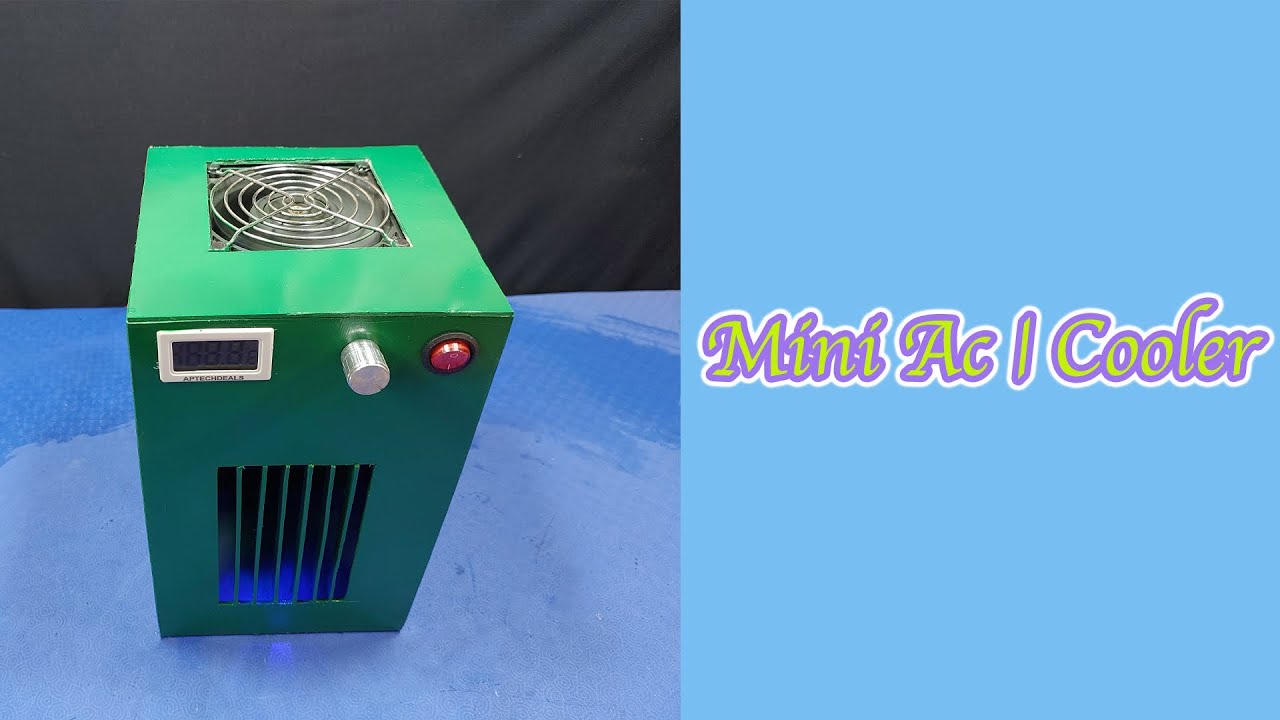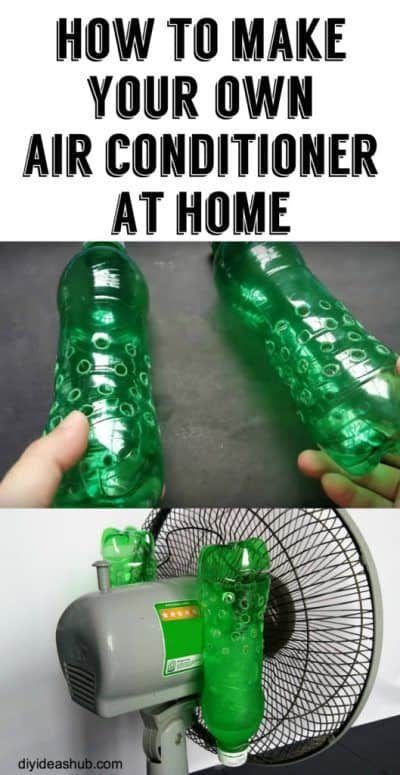With rising energy costs and a growing awareness of our environmental impact, many are seeking creative cooling methods that don’t rely on traditional air conditioning systems. Off-grid cooling solutions can keep you comfortable during hot summer months without the need for electricity. Whether you’re living in a remote area or just looking to save money and reduce your carbon footprint, these innovative techniques can be both effective and enjoyable. Let’s dive into some of these alternative methods!
Understanding the Basics of Air Conditioning

To appreciate off-grid cooling solutions, it's crucial to understand how traditional air conditioning works. At its core, air conditioning operates on a simple principle: heat transfer. Let’s break it down:
- Evaporation: A refrigerant absorbs heat from the indoor air and evaporates into a gas.
- Compression: The gas is compressed, raising its temperature and pressure.
- Condensation: The hot gas moves outside where it releases heat and condenses back into a liquid.
- Expansion: The liquid refrigerant expands and cools, ready to absorb more heat from indoors.
This cycle continues, maintaining a comfortable indoor temperature. However, traditional AC units require a significant amount of electricity, which can be a drawback, especially in areas with limited access to power.
Now, let’s explore some off-grid cooling methods that harness natural elements and innovative designs:
- Evaporative Cooling: This method uses water evaporation to cool the air. For instance, placing a shallow bowl of water in front of a fan can create a refreshing breeze.
- Passive Cooling: Designing your home with natural ventilation in mind can significantly reduce indoor temperatures. Strategic placement of windows and vents allows for cross-ventilation, maximizing airflow.
- Thermal Mass: Materials like stone or concrete can absorb heat during the day and release it at night, helping to stabilize indoor temperatures.
- Green Roofs and Walls: These not only provide insulation but also cool the air around them through the process of evapotranspiration.
Understanding these principles not only empowers you to make informed decisions about cooling your home but also encourages a sustainable approach to comfort. As we continue to explore off-grid solutions, the possibilities for enjoying a cool, comfortable space without electricity are both exciting and essential for our future.
Also Read This: Uploading and Sharing Live Videos on Dailymotion
Natural Cooling Techniques

When the heat hits, sometimes the best solutions come from nature itself! Let's dive into some natural cooling techniques that will help keep your home comfy and cool without a drop of electricity.
One of the simplest methods is to utilize cross-ventilation. Open windows on opposite sides of your home to create a natural breeze. This technique works best during the early morning or late evening when the outside air is cooler. For added effect, consider placing a fan near a window to pull in that fresh air.
Another fantastic way to cool down is by strategically using plants. Indoor plants like snake plants or peace lilies not only purify the air but also release moisture, which can help lower the temperature. You can also create a small indoor garden with ferns or palm trees, which can create a mini-ecosystem that keeps your space cooler.
- Use light-colored curtains to reflect sunlight and keep the heat at bay.
- Build a small water feature, like a fountain, to add moisture to the air and create a cooling effect.
- Place a bowl of ice in front of a fan to create a homemade air cooler. The fan blows over the ice, making the air feel much cooler!
Don’t underestimate the power of shade. Planting trees or shrubs outside your windows can block direct sunlight, helping to keep your home cooler. If you lack outdoor space, consider using outdoor shades or awnings to reduce heat gain.
Lastly, during the hottest parts of the day, it’s best to keep your home sealed tight. Close all windows, doors, and even some shutters to trap the cooler air in and prevent the heat from sneaking in. If you do need to open them, time it right!
Also Read This: How to Make Rubber Bracelets with a Simple DIY Tutorial
DIY Cooling Systems Using Common Materials
Get crafty with these DIY cooling systems that harness everyday materials to help you beat the heat! You might be surprised at how effective and simple they can be.
First up is the classic homemade air cooler. You can easily create your own by taking a simple box fan and positioning a shallow pan or bowl of ice or frozen water in front of it. As the fan blows air, it picks up the cool air from the ice and distributes it throughout the room. It’s a quick and efficient way to lower the temperature!
Next, consider making a evaporative cooler. You’ll need a fan, a cardboard box, and some wet cloths. Cut holes in the box for airflow, wet some cloths, and hang them inside. When you turn on the fan, the air will flow over the wet cloths, cooling down as it moves into your space.
- For a more portable option, try a spray bottle with cold water. Spritz yourself throughout the day for a quick refresh.
- Use old T-shirts or towels as cooling rags. Soak them in cold water, wring them out, and drape them around your neck or over your forehead.
- If you have a small cooler, fill it with ice and place a fan on top. The cool breeze it creates will help cool down any room!
Finally, if you’re feeling a bit more adventurous, build a simple solar air heater using a cardboard box and dark paint. This can help circulate cooler air into your home while also utilizing the sun's energy.
With a little creativity and some household items, you can craft your own cooling systems that not only work effectively but also bring a bit of fun into your home! Embrace these DIY methods and enjoy a refreshing summer without breaking a sweat—or the bank!
Also Read This: How to Make a Motor Plane: Fun DIY Tutorial on Dailymotion
5. Using Evaporative Cooling for Comfort
When the heat kicks in, and you’re looking for a way to stay cool without cranking up the AC, evaporative cooling is a fantastic option. This method harnesses the natural cooling properties of water and the air around you, making it an eco-friendly alternative that can significantly reduce indoor temperatures.
So, how does it work? The principle behind evaporative cooling is simple: when water evaporates, it absorbs heat, leading to a drop in temperature. You can create your own evaporative cooler right at home with a few materials!
Here’s a quick guide:
- Gather Your Materials: You’ll need a shallow pan, water, ice (optional for extra cooling), and a fan.
- Set Up Your Pan: Fill the shallow pan with water. If you want a stronger cooling effect, add some ice cubes to it.
- Position Your Fan: Place a fan in front of the pan so that it blows air across the surface. This airflow will encourage the evaporation process.
- Enjoy the Breeze: Turn on the fan and let the refreshing, cool air circulate around your space!
Depending on the humidity in your area, you can experience a significant temperature drop. Evaporative cooling works best in dry climates, where the air can absorb more moisture. If you live in a humid area, it might not be as effective, but it’s worth a try!
Additionally, you can enhance the effect by:
- Creating Cross Ventilation: Open windows on opposite sides of your home to let the cool air flow through.
- Using Wet Curtains: Hang wet sheets or towels in front of windows. As the air passes through, it will cool down.
By implementing these tips, you can stay comfortable and cool without relying on electricity. Plus, it’s a fun DIY project that can be customized to your space!
Also Read This: How to Curl Hair with Curling Iron at Home: Dailymotion Guide for Beginners
6. Incorporating Plants for Natural Air Cooling
Did you know that plants can play a vital role in cooling your home? Incorporating greenery not only beautifies your space but also helps to cool the air naturally, making your home feel more refreshing without the need for electric cooling methods.
Here’s how it works: plants release moisture into the air through a process called transpiration. As they release water vapor, they can significantly reduce the temperature of the surrounding area. It’s like having a natural air conditioner!
To make the most of this method, consider the following plants that are particularly effective at cooling:
- Spider Plant: Known for its air-purifying qualities, the spider plant also releases moisture, making your indoor environment cooler.
- Pothos: This hardy plant not only thrives in low light but also helps to lower temperatures while enhancing indoor air quality.
- Peace Lily: With its stunning blooms and ability to filter toxins, the peace lily is a great choice for cooling and beautifying your space.
Here are a few tips for incorporating plants into your cooling strategy:
- Strategic Placement: Position plants near windows or in spots where sunlight can reach them, as this encourages growth and maximizes their transpiration process.
- Create a Green Wall: Consider setting up a vertical garden. This can add a significant amount of greenery and cooler air to your room.
Not only do plants help to cool the air, but they also improve your mood and overall well-being. So, whether you're sipping lemonade on a hot summer day or just trying to beat the heat, having plants around can make a world of difference—naturally!
Also Read This: How to Watch Videos Offline on Dailymotion Enjoy Videos Without Internet
7. Creative Ideas for Indoor Cooling
When the heat soars and the air feels stagnant, it’s time to get a bit creative with your indoor cooling solutions. You’d be surprised at how many simple, low-tech methods can help you beat the heat without relying on air conditioning. Here are some fun and effective ideas:
- DIY Swamp Cooler: Create a homemade evaporative cooler by placing a bowl of ice or a frozen water bottle in front of a fan. As the fan blows, it circulates the cold air from the ice, creating a refreshing breeze.
- Utilize Cross Ventilation: Open windows on opposite sides of your home to create a natural airflow. This cross-breeze can make a significant difference, especially during cooler evening hours.
- Use Reflective Window Covers: Hang reflective materials like aluminum foil or mylar blankets on windows to reflect sunlight away. This can lower indoor temperatures significantly.
- Indoor Plants: Adding plants like ferns or peace lilies not only beautifies your space but also naturally cools the air through the process of transpiration.
- Cold Water Soak: Fill a basin with cold water and keep your feet in it while you work or relax. This can help regulate your body temperature effectively.
- Bathe in Cold Water: A quick cold shower can do wonders for beating the heat. It’s refreshing and can help you feel cooler for hours afterward.
- Cool Your Bedding: Stick your sheets in the freezer for a few minutes before bed. Climbing into a cool bed is a delightful way to fall asleep on a hot night!
These ideas not only provide relief but also add a touch of creativity to your home. Experiment with different methods to find what works best for you and enjoy a cooler, more comfortable living space.
8. Safety Considerations When DIYing Cooling Methods
While getting creative with indoor cooling methods can be fun, it’s important to keep safety in mind. Here are some essential considerations to ensure you stay cool and safe:
- Electricity and Water: If you’re using fans with ice or water, ensure that the electrical connections are safe and dry. Avoid running electrical appliances in wet areas to prevent shocks.
- Ventilation: Ensure that whatever cooling method you employ doesn't obstruct airflow. Poor ventilation can lead to mold growth or air quality issues.
- Check for Allergens: If you’re using plants for cooling, be mindful of any allergies. Some plants can also attract pests, so choose carefully!
- Weight Considerations: If you’re hanging items like reflective materials, ensure they’re secured properly. A falling object could cause injury or damage.
- Monitor Ice Usage: If you’re using ice packs or bowls of ice, refresh them frequently to avoid creating excess humidity in your home.
- Stay Hydrated: As temperatures rise, it’s easy to forget to drink enough water. Keep yourself hydrated to help your body regulate its temperature more effectively.
By keeping these safety tips in mind, you can enjoy your creative cooling methods while ensuring a safe environment for you and your family. Stay cool and have fun experimenting!
 admin
admin








